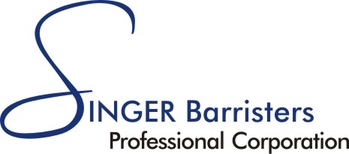A recent decision by Superior Court Master Donald Short raises an interesting advocacy opportunity based upon a little-known and fairly recent piece of Ontario legislation, the Apology Act.The aim of the act was to allow a potential defendant to express remorse or regret without fear of such comments precluding a defence on the merits and with no impact on a determination of liability. The legislature thought it might encourage emotional bridge building between aggrieved parties that could have the positive effect of either preventing or circumscribing litigation. the master reviewed the principles enunciated in the Apology Act. In Simaei, the plaintiff wished to plead in her statement of claim that her former employer’s apology arising from the termination of her employment was an admission of fault or wrongdoing. As such, the plaintiff wished to use the apology as a quiver in the arrow of her case. The defendant’s lawyers argued the court should strike that part of the statement of claim as being prejudicial to her in addition to being vexatious and an abuse of process. None of the allegations have been proven in court.Short agreed, citing the provisions ot andate that a party cannot use an apology made in good faith (unless made in the context of an on-the-record discussion as part of the litigation) against the other side in the context of the litigation. The master went even further and suggested the court must by necessity strike the portion of the pleading referring to the apology since a party, under the Rules of Civil Procedure, “cannot plead facts that go nowhere.In light of the wording of the Apology Act, pleading the apology goes nowhere because the provisions state that a party cannot use the apology in the litigation as an admission of liability. Further, the trier of fact cannot consider it in any determination of fault. Thus, even pleading the fact that there was an apology by the defendant offends the principles of pleading and potentially prejudices the defendant at the trial. Additionally, if the apology remains a part of the pleading, it becomes a live issue on discovery.While the case on its face appears to provide some practical advice on the principles of pleading, it is the discussion of this relatively unknown statute that is the real lesson for lawyers to draw from the decision. Specifically, the act essentially allows a client in any potential civil case where a putative plaintiff feels aggrieved or possesses a level of moral superiority to strategically issue an apology in an attempt to diffuse the situation. The master, in obiter, underscored the virtue of a strategic apology when he noted: “My personal involvement in mediation, arbitration has provided me with examples of the value of an apology in reaching a mutually acceptable out-of-court resolution.”I concur with Short. My own experiences over 22 years of litigation are that a properly timed and genuine expression of remorse can avert a lawsuit or mitigate the eventual cost to the defendant of settling the lawsuit. As lawyers, we think of the facts of a potential case in emotionally detached and almost clinical terms. But to the clients sitting in front of us, if we listen closely, mixed with their explanations of how they suffered economic losses by the proposed defendant will be expressions of moral indignation about how someone could do something so bad to them. Settling or avoiding lawsuits involves understanding more than just the law. It involves trying to get inside the head of the opposing party to empathize with its perspective. Plaintiffs often just want someone to hear and understand them. As counsel for a potential defendant or for you if you are dealing with an unsatisfied client, Short reminds us that the Apology Act gives us a very useful tool. Used effectively and, most importantly, with authenticity and compassion, an apology may save thousands of dollars. It did not have that effect for the defendant in Simaei, but the plaintiff will not be able to use an ostensibly heartfelt expression of regret against her in the civil action.
